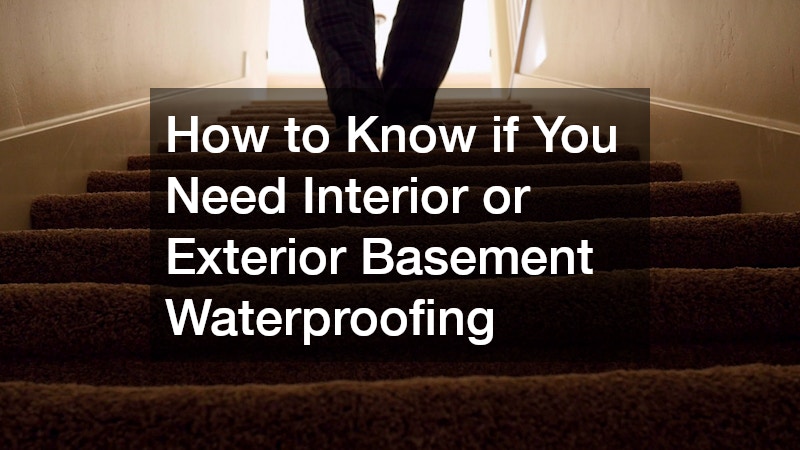
Water damage in basements can lead to serious structural issues and costly repairs. Homeowners often face the dilemma of choosing the right method for basement waterproofing to ensure the longevity and safety of their homes. This article will guide you through understanding when and why you might need either interior or exterior basement waterproofing.
Video Source
Dealing with a damp or flooded basement can be stressful, especially when it's not clear whether the problem originates from inside or outside the home. By distinguishing the differences between interior and exterior methods, you can make an informed decision on how to address these issues efficiently. Knowing the signs and benefits of both systems can prevent further damage and maintain the value of your property.
So, how do you determine which method is most suitable for your home? This article will explore the signs indicating the need for waterproofing and provide a detailed comparison of interior and exterior solutions. Understanding these aspects is crucial for maintaining a safe, dry, and healthy living environment.
Musty odors in the basement suggest moisture intrusion, a common problem that requires attention. Visible mold or mildew can also be a clear indicator that the basement environment is too humid. If the air feels damp or the walls are wet to the touch, these are signs you might need some form of waterproofing.
Pooling water or persistent wet patches on the floor can indicate a more severe waterproofing issue. Over time, water stains and efflorescence on walls point to water seepage, which may worsen without proper intervention. Cracks in the foundation can also open paths for water entry, necessitating adequate waterproofing measures.
Avoiding these signs can lead to further complications, including structural damage. Damp conditions also support the spread of pests such as termites and carpenter ants, which thrive in moist environments. Prioritizing early detection and treatment can safeguard your home’s stability.
Interior waterproofing is commonly selected when external excavation is not feasible. This method focuses on diverting water away from the basement using drainage systems installed inside the home. Interior solutions are often less expensive and disruptive compared to exterior techniques.
This approach typically involves installing interior drain tile systems that capture water that enters your basement. With the help of a sump pump, accumulated water is directed away from the property. Additionally, waterproofing coatings can be applied to walls to prevent seepage and humidity.
Interior addresses water already inside, eliminating excess moisture effectively. It is an ideal solution for minor leaks or when groundwater pressure is moderate. Homeowners benefit from this method as a preventive measure against water damage when exterior excavation is impractical.
Exterior basement waterproofing provides a comprehensive solution by preventing water from penetrating the foundation walls. This method typically involves excavating around the house to apply a waterproof barrier directly to the exterior walls. Though more labor-intensive, it effectively prevents water infiltration at the source.
By installing drainage panels and a drainage pipe system, water pressure against the foundation is alleviated, protecting the structural integrity of the home. In addition, this exterior barrier prevents moisture from reaching the interior, preserving insulation and finishes. Despite a higher cost, it is a long-term solution that addresses the root cause of leaks and dampness.
This solution is suitable for properties experiencing severe water issues, especially in areas with high water tables. Furthermore, landscaping can assist in directing water away from the home, enhancing the exterior waterproofing system. Exterior methods ensure a thorough defense against water intrusion, particularly in older properties with aging foundations.
Choosing between interior and exterior depends on various factors, including the severity of the water issue and the structural conditions of your home. While interior methods are cost-effective and suitable for minor to moderate water problems, exterior solutions offer a long-lasting fix for severe situations. A professional evaluation can further assist in making the right decision for your basement waterproofing needs.
Effectively diagnosing your basement’s needs can prevent future damages and assure your home remains a safe, moisture-free environment. Addressing the problem promptly with the right waterproofing strategy is vital to preventing structural issues and maintaining property value. Whether opting for interior or exterior solutions, the goal remains the same: safeguarding your home against water damage.
Understanding the signs of water intrusion and being proactive about waterproofing can save you from costly repairs and stress. Prioritizing waterproofing ensures the integrity and longevity of your living space. By doing so, you not only protect your home but also enhance the overall comfort and health of those living in it.
.